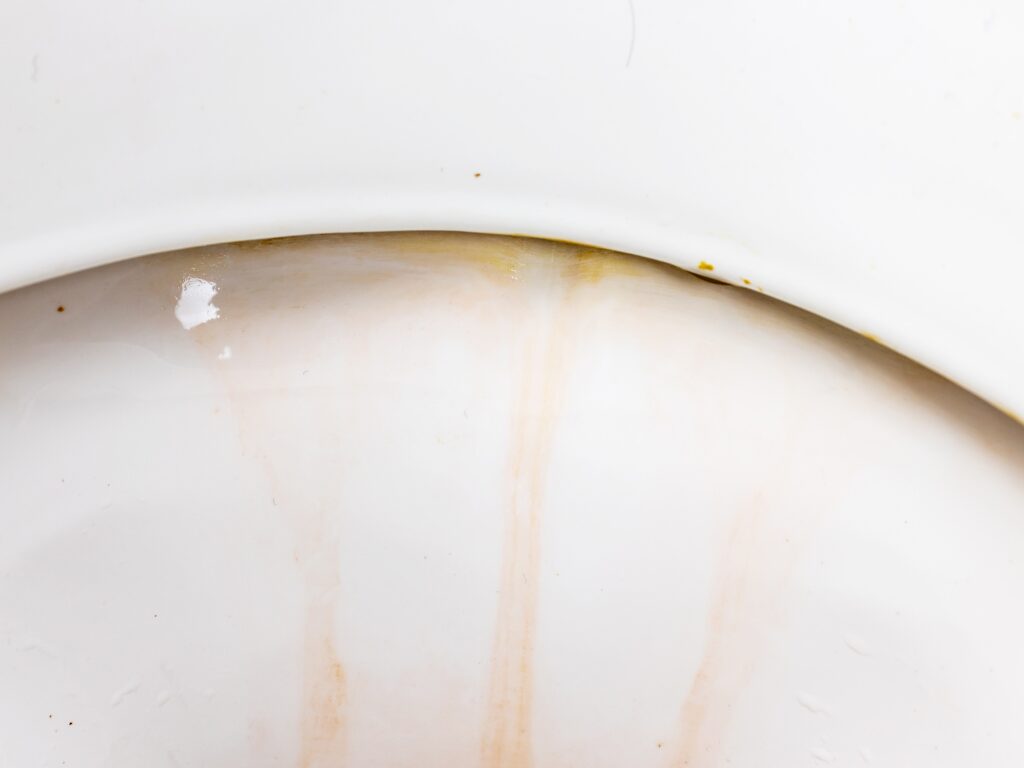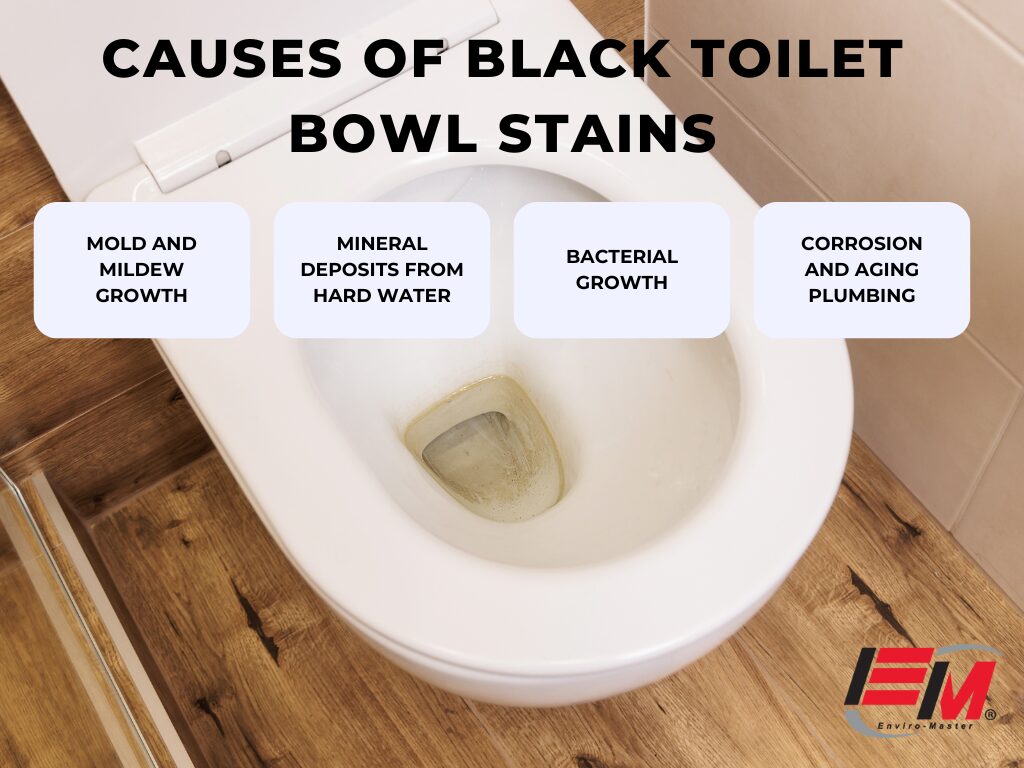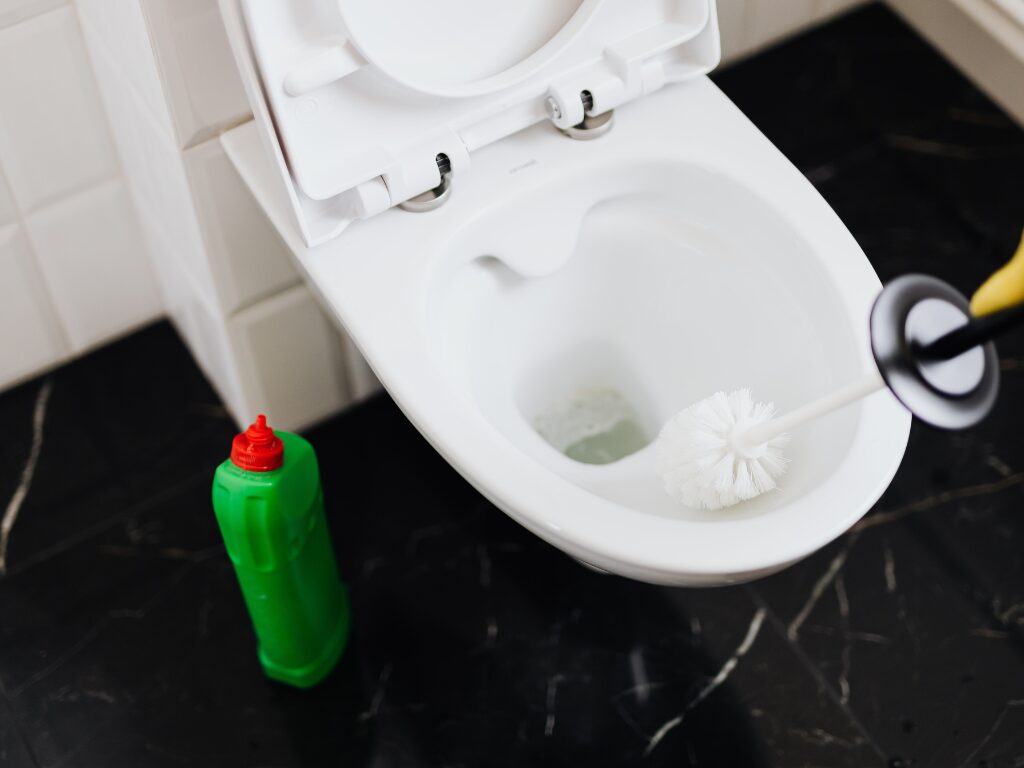Black stains in your toilet are more than an eyesore; they often mean something is wrong. In this guide, you’ll learn what causes those stubborn black marks (and other stains) and how to remove them. From mold and mildew to mineral buildup and corrosion, each stain tells you what’s going on with your plumbing and water system.
We’ll also walk you through practical at-home fixes featuring everyday products like vinegar, baking soda, and hydrogen peroxide.
But remember, surface-level cleaning only goes so far. For lasting results and true sanitation, you need professional services. You’d get just that with Enviro-Master. Our experts use advanced equipment and hospital-grade germicides to eliminate buildup, bacteria, and odors at the source. We don’t just clean; we make bathrooms healthier, fresher, and easier to maintain.
If you’re tired of fighting stains and want a spotless, sanitary bathroom, call 866-415-3858 today. Let Enviro-Master handle the hard work so you can focus on better things.
Black toilet bowl stains are a common sign of hidden hygiene problems. They may come from hard water minerals, bacteria, or even mold. Understanding the cause makes it easier to get rid of stains and keep them away.
Keeping a toilet clean isn’t just about appearances. It’s also about creating a healthy environment that serves as a positive reflection of your home or business.
What are the Different Types of Toilet Stains?
As you work to keep your toilet clean, it’s important to understand that not all stains are created equal. Each stain type has its own unique causes and requires specific cleaning methods. Below, we’ll take a closer look at some common types of toilet stains and how they differ.
Black Stains
When you have black toilet bowl stains, the culprit may be mold or mildew. These fungi thrive in moist environments. Another common cause is manganese, a mineral that can leave behind dark stains when water with a high manganese level sits in the bowl for too long. These marks may look serious, but with the right cleaning method, you can easily remove them.
Rust-Colored or Brown Stains
Rust-colored or reddish-brown stains often come from water with a high iron content. When iron in the water reacts with air, it turns into iron oxide, which leaves a reddish-brown film in the toilet bowl. These stains are typical in homes or buildings that use well water or have older plumbing.
Hard Water Stains
Hard water stains form when minerals like calcium and magnesium build up in your water supply. Over time, these minerals leave a white or gray residue that hardens and becomes difficult to remove. You’ll often see these stains just below the water line or along the upper rim of the bowl.
Limescale Deposits
Like hard water stains, limescale forms when calcium carbonate builds up in water over time. It tends to collect in spots that stay wet, creating a hard, crusty layer that can grow thicker and thicker. If you’ve ever tried to scrub away limescale, you know it’s hard to remove because it bonds very firmly to the surface.
When you know the type of stain you’re dealing with, it’s easier to choose the right cleaning products and methods to remove it. This knowledge not only helps you clean more effectively but also allows you to identify the root cause and keep the stain from returning.
What Causes Black Stains to Form in a Toilet Bowl?
Stubborn black stains in toilet bowls aren’t just annoying; they are a sign that something needs to be done. Understanding the cause behind a given stain helps you remove it more effectively and keep it from coming back. Below are some of the most common reasons you may find a black stain in your toilet:
Mold and Mildew Growth
Usually, when you notice black stains in your toilet, mold and mildew are to blame. They quickly grow in moist, dark environments; your toilet is an ideal breeding ground. When that moisture builds up due to poor air circulation in the bowl, you may see black or dark green spots.
Mineral Deposits from Hard Water
Hard water often contains minerals like magnesium and calcium, but when black stains appear, it’s often due to iron and manganese. These minerals react with oxygen in the air, leaving behind dark brown or black deposits in the bowl. Over time, you may notice that the buildup has accumulated and hardened, making it difficult to remove.
Bacterial Growth
Some bacteria, like Serratia marcescens, can cause dark red or black stains to form in toilets. These bacteria feed on minerals and organic matter in the water and grow quickly in damp areas. If you clean the bowl regularly, you can usually prevent buildup. But if the toilet isn’t properly maintained, the stains can spread and become a lot harder to break down and remove.
Corrosion and Aging Plumbing
Old or corroded plumbing can also leave you with black stains in your toilet. As metal pipes and parts break down over time, they release minerals into the toilet bowl that oxidize and create dark marks. This may happen in older buildings or homes with outdated or damaged plumbing systems.
How Can You Remove Black Toilet Stains at Home?
You don’t always need a professional to get rid of black stains in your toilet. There are plenty of easy, effective ways to handle these tough spots and bring back your toilet’s shine. Here are a few methods you can try at home:
Regular Use of Hydrogen Peroxide
Hydrogen peroxide is a powerful cleaning agent that breaks down and lightens organic stains, making it great for removing mold and mildew. Follow these simple steps to clean toilet stains at home:
- Pour one cup of hydrogen peroxide into your toilet bowl.
- Wait 30 minutes to let the peroxide work.
- Scrub the bowl thoroughly with a toilet brush.
- Flush to rinse everything away.
This method not only cleans but also disinfects, leaving your toilet fresh and sanitary.
White Vinegar and Baking Soda
For mineral deposits and bacteria-related stains, vinegar and baking soda work together as a powerful natural cleaner. Here’s how to use them:
- Pour one cup of vinegar into your toilet bowl.
- Sprinkle baking soda over the vinegar.
- Let the mixture fizz for 10 to 15 minutes to break down the buildup.
- Scrub the bowl with a toilet brush.
- Flush away the residue.
The acidity of vinegar and the gentle abrasion of baking soda lift stains and freshen the bowl without using harsh chemicals.
Borax Paste
Borax is a strong cleaner that can handle even the toughest toilet stains. Follow these simple steps to try it on your toilet:
- Mix borax powder with water to create a thick paste.
- Apply the paste directly to the stains.
- Let the paste sit for 15 to 20 minutes so it can break down the buildup.
- Scrub in a circular motion with a toilet brush or pumice stone for stubborn spots.
- Flush to rinse everything away.
This method is effective for restoring a clean, smooth surface and removing tough mineral deposits.
Lemon Juice and Salt
Lemon juice is a natural acid that works well on black stains, especially when they’re caused by mildew. The citric acid breaks down the stain, and salt adds gentle scrubbing power. Here’s how to use them together:
- Mix lemon juice and salt to create a cleaning solution.
- Apply the mixture directly to the stain.
- Let it sit for several minutes to loosen the buildup.
- Scrub the area thoroughly, then flush to rinse.
If you’re big on scents, you’ll love the fresh, clean smell lemon juice and salt.
Pumice Stone for Hard Mineral Deposits
For tough mineral deposits, grab a pumice stone. Here’s how to use it safely:
- Wet the pumice stone.
- Gently rub the stone over the stained area.
- Use light pressure and keep the surface wet to avoid scratching the porcelain.
- Rinse or flush to wash away loosened buildup.
The gentle abrasion of the pumice stone helps lift mineral stains without damaging your toilet bowl, leaving the surface smooth and clean.
Can Enviro-Master Help With Black Toilet Stains?
Cleaning your toilet will definitely make your bathroom look better, but that’s not all. It can make your environment healthier and more hygienic. Although at-home cleaning products can handle minor stains and daily upkeep, deep or recurring black stains often require professional skill.
Enviro-Master specializes in comprehensive restroom and hygiene services built to tackle even the toughest cleaning challenges. Our specialists use advanced cleaning techniques (like electrostatic spraying with hospital-grade germicides) to eliminate bacteria and prevent germ and bacteria buildup.
Our company goes beyond just cleaning; we also include preventive treatments to ensure restrooms remain in top condition. We work with your existing janitorial services to add an extra layer of protection, making sure that every aspect of restroom hygiene is covered. From regular deep cleaning to specialized sanitation, Enviro-Master is equipped to handle restrooms of any size in any industry.
Every business is different, which is why we create cleaning plans tailored to your facility, schedule, and budget. Choosing professional cleaning not only saves you time and effort but also builds a safer, more welcoming environment for your employees and customers.
You don’t have to worry about restroom upkeep. Contact Enviro-Master today to find out how we keep facilities pristine. Visit our website or use our pricing calculator to explore our solutions and schedule a consultation. With Enviro-Master, you can trust that your restrooms are in capable hands and focus on what matters most in your business.





